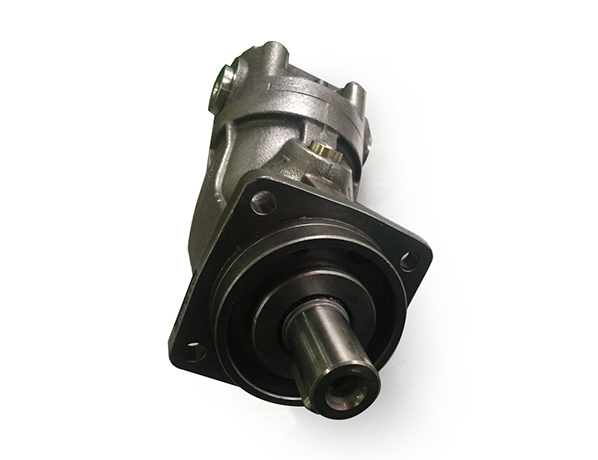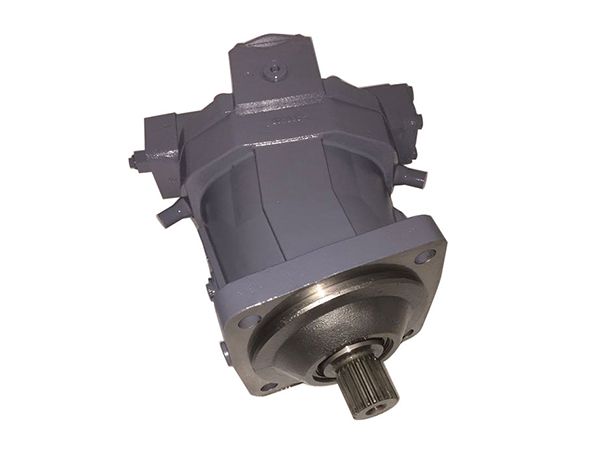The hydraulic pump is the power source of the hydraulic system, also called the “power component”, which converts the mechanical energy input by the prime mover (motor, internal combustion engine, etc.) into hydraulic energy to drive the actuators in the hydraulic system. In every hydraulic system, hydraulic oil pump is an indispensable power equipment. The application range of hydraulic pump is wide. From large engineering machinery to small hydraulic tools, hydraulic pumps are inseparable. Therefore, it is common to understand the common faults of hydraulic oil pumps. An indispensable knowledge of engineering staff. Otos collects daily troubleshooting solutions and maintenance considerations to provide a basic understanding of the hydraulic system for engineers.
1. The main reason and elimination method of hydraulic pump not sucking oil or discharging oil during working process
(1) If the oil pump is damaged, the oil pump motor is damaged or the coupling between the motor and the pump is damaged, the oil pump, motor or coupling should be replaced in time.
(2) If the oil level of the fuel tank is too low or the installation position of the oil pump is too high, the oil pump will not suck the oil. The oil tank should be turbid to the oil mark position or the height of the oil pump should be adjusted so that the suction stroke of the pump is within the specified range.
(3) The oil pump seal is aging, the oil seal is damaged, the pump enters the air, and the oil pump absorbs less. Check the pump shaft seal to replace the new oil seal or replace the oil pump.
(4) The oil contains impurities, and some of the viscosity increases. The oil suction filter or the oil pipe is blocked by the sundries and cannot be properly sucked. The oil pipe and the oil filter should be cleaned in time, and the qualified oil should be replaced regularly according to relevant regulations.
2. The main reason and elimination method of hydraulic pump discharging oil but insufficient pressure and reducing efficiency
(1) The sliding parts in the pump are seriously worn, the volumetric efficiency is too low, and the axial or radial clearance of the pump is too large. The solution is to replace the oil pump or overhaul the oil pump.
(2) The oil pump tubing is damaged, the suction end is not tightly sealed into the air, and the connections are checked to seal or replace the oil pipe.
(3) The oil pump tubing is clogged and there are many debris in the filter. It should be cleaned in time to ensure the cleanliness of the pipeline and filter.
(4) The variable pump is improperly adjusted, and the spool of the relief valve is seriously worn. Re-adjust the flow and replace the overflow valve to ensure stable operation of the pump.
(5) The oil pump speed does not reach the rated speed, and the oil pump contains debris. Use a suitable motor according to the instructions. If the pump contains debris, clean it in time.

3. Main causes and troubleshooting methods for serious noise in hydraulic pump operation
(1) In most cases, the pump is insufficiently sucked, such as the oil filter is blocked; the oil level is too low, the air is sucked; the oil seal of the pump absorbs air, etc., the oil level of the fuel tank should be checked in time, and the damaged pipeline should be replaced. Check the pump body seal, clean the oil pipe, oil filter, and regularly replace the grease.
(2) The viscosity of the oil is too high, the oil temperature is too low, and there are bubbles in the oil. The appropriate oil should be replaced according to the season.
(3) Mechanical installation problems, the coupling of the pump and the motor is damaged or the pump and the motor are not in the same sense, causing large vibration during operation and loud noise. Check the wear of the coupling, replace the coupling in time and correct it according to the installation requirements.
(4) The speed of the pump is too high and the motor is not suitable. The pump speed should be reduced and the motor should be selected reasonably.
(5) The pump oil seal wears into the air, and the pump end cover bolt is loose. Replace the shaft seal of the pump and tighten the gland bolts.
(6) Gear oil pump gears are not high precision or poor contact, and the parts inside the pump are damaged. Replace the gear or grind and replace the damaged parts.
(7) The axial clearance of the gear pump is too small, and the verticality of the gear bore and the end face or the parallelism of the two holes on the pump cover are out of tolerance. The gear pump should be replaced in time.
(8) The overflow valve of the oil pump is blocked. Clean the overflow valve or replace it.
(9) The pipeline is not stable and generates vibration. Secure the tubing.
4. Main causes and troubleshooting methods for oil leakage of hydraulic pump body
(1) The center spring of the plunger pump is damaged, which causes the seal between the cylinder and the oil distribution plate to be lost. Replace the spring and reseal
(2) The oil seal or seal is damaged, the seal of the pipe joint is worn or the seal is not tight. Replace the seal.
(3) The parts inside the pump are worn out and the clearance is too large. Replace or reconfigure the part.
5. Main reasons and troubleshooting methods for hydraulic pump overheating
(1) The viscosity of the oil is too high or too low. If the oil is used for a long time, the oil should be changed in time and the oil of suitable viscosity should be used.
(2) The oil pump side plate and bushing and gear end face are seriously worn, causing the oil pump to overheat. The side plate, bushing or new oil pump should be replaced in time.
(3) The fuel tank volume is too small, the heat dissipation is not good, and the oil temperature is high. The fuel tank capacity should be increased to expand the heat dissipation area.
6.1 Check before the operation of the hydraulic pump
(1) Whether the hydraulic pump installation is accurate and reliable, whether the screw is tightened, and whether the coupling installation meets the requirements;
(2) Whether the pump body is filled with oil;
(3) Whether the steering of the pump matches the inlet and outlet ports;
(4) Whether the safety valve of the hydraulic system is adjusted to the specified pressure value.
